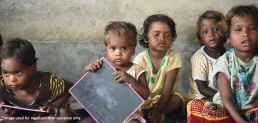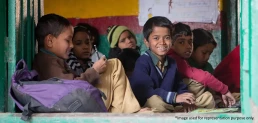How CSR Initiatives Can Transform the Lives of Underprivileged Children
Understanding Corporate Social Responsibility (CSR)
Corporate Social Responsibility, or CSR, is extremely important in today’s rapidly developing society. On the one hand, while industries are rising and contributing to economic growth, better infrastructures, and more opportunities, on the other hand, you will see shifting economies, sabotaged lifestyles, and depleted ecosystems. In layman’s terms, CSR implies that if your business unit utilizes the resources and manpower from society, you also need to give them back something that will continue uplifting them. For example, if we consider child welfare, CSR initiatives can provide access to education and healthcare and help protect children in communities (Ministry of Corporate Affairs, Government of India).
Under the Enactment of Companies Act, 2013, India proudly emerged as one of the first nations to make it mandatory for companies to engage in CSR projects for social welfare.
Why CSR Matters for Social Development?
Social development initiatives primarily fall under the government’s purview. However, they are often unable to penetrate societies or specific communities. Registered companies, on the other hand, have this leverage as they continuously employ people from different walks of life. They also have financial means and are morally obligated to contribute to society and the environment in which they do business. Thus, with CSR projects, social development can be achieved faster, better, and more personalized. The benefit of such acts is that they also help the company build a positive brand presence in society, which increases its awareness. Among the most vulnerable groups, children greatly benefit from well-structured CSR efforts (National CSR Portal).
Benefits of Corporate Social Responsibility for Children’s Welfare
Improved Access to Education and Learning Resources
One of the primary benefits of corporate social responsibility is providing underprivileged children access to quality education. Many CSR programs fund related school infrastructure, distribute books and offer various scholarships to children from low-income families.
Enhanced Child Healthcare and Nutrition Programs
A few well-established companies also contribute to better child healthcare by funding regular immunization programs, nutrition initiatives, and medical camps in their offices or surrounding areas. This improves overall child well-being and reduces mortality rates (World Health Organization).
Provision of Safe Spaces and Protection for Vulnerable Children
CSR-backed child protection programs successfully establish safe shelters for abandoned and abused children in different communities. They also actively ensure they receive care and emotional support during such times. These companies often collaborate with reliable NGOs to strengthen child protection policies (National Commission for Protection of Child Rights (NCPCR)).
Skill Development and Career Opportunities for Youth
By supporting vocational training programs, CSR initiatives equip older children and youth with essential job skills like computer learning, accounts management, manual work, etc. This helps them start off with stable employment in the future (Skill India Initiative).
Advantages of CSR for Businesses and Society
The advantages of corporate social responsibility benefit both the companies and the society. Companies that actively participate in CSR are known to enjoy enhanced brand loyalty, improved employee morale, and stronger customer trust. Businesses that integrate social impact into their core operations also attract socially conscious investors, eventually helping them secure better deals and gain positive public recognition (Ministry of Corporate Affairs, Government of India).
Examples of CSR Initiatives Benefiting Underprivileged Children
- Tata Group: TATA Group has been widely recognized for its social efforts. Through its CSR wing (Tata Trusts), it frequently runs multiple education and health initiatives for children.
- Infosys Foundation: The IT giant is known to support child education, healthcare, and multiple nutrition programs across India.
- ITC’s Mission Sunhera Kal: This conglomerate focuses on sustainable education and skill development for children from marginalized communities. You can find that they contribute a percentage of their income through all their products.
How Companies Can Implement Meaningful CSR Initiatives
If you are a business unit that wants to make a difference, here are ways for you to structure your CSR efforts effectively:
- Identify Critical Issues: Focus on pressing challenges such as child education, healthcare, and nutrition, but pick something where your contribution can impact.
- Collaborate with NGOs: Find authentic and dedicated NGOs to reach the right beneficiaries and gain valuable experience through their expertise.
- Allocate Dedicated Funds: Budget your profits and expenses and then set aside a percentage for CSR to support your long-term initiatives.
- Measure Impact: Regularly assess and report your CSR outcomes to improve transparency and effectiveness. Inform your stakeholders of your activities to maintain trust.
How CRY India Works with CSR Initiatives to Uplift Underprivileged Children
At CRY India, we actively collaborate with corporate houses to properly funnel their CSR funds into sustainable child welfare programs:
- Education: To ensure access to quality schooling for underprivileged children.
- Healthcare: To implement proper medical aid and regular nutrition programs.
- Child Protection: To advocate for stronger child safety laws and their implementation and create compassionate support systems.
- Skill Development: To empower youth with vocational training and career guidance.
How Businesses Can Collaborate with CRY to Make a Difference
- Corporate Partnerships: Businesses can join hands with CRY to fund large-scale child development projects.
- Employee Volunteering Programs: Companies can encourage staff participation in various volunteering programs, provide volunteer hours funding to organizations like CRY.
- Donations and Grants: Businesses can also allocate a portion of their CSR budget to CRY's ongoing projects.
- Awareness Campaigns: Raising awareness about child rights among stakeholders can help amplify the impact of CSR efforts.
Invest in social welfare to reap the proper benefits of corporate social responsibility initiatives. As a business, you can fulfill your ethical responsibilities and contribute to a brighter future for millions of children through this.
For more information on how to contribute to these projects, reach out to our team at https://www.cryamerica.org/.
Child Rights in India: How Far Have We Come and What More Needs to Be Done
Understanding Child Rights in India
In India, children were treated with care and worshipped on different occasions. From dressing young girls as Goddess Durga to celebrating Children’s Day at the birth of Jawahar Lal Nehru, India has set a gracious example. However, when it comes to having rights of children in India in place, we are still far behind other countries. Technically, the rights of children in India cover survival, development, protection, and participation. Laws like the Juvenile Justice Act, the Right to Education Act, and the Protection of Children from Sexual Offences (POCSO, 2012) Act aim to safeguard these rights. But in reality, many young souls still struggle to access necessities.
Also Read: Child labor
Key Aspects of Child Rights
- Survival Rights: Access to healthcare, nutrition and hygiene, and living standards.
- Development Rights: Fundamental rights include education, leisure, and access to cultural activities.
- Protection Rights: Legal protection from abuse, neglect, child marriage and child labor.
- Participation Rights: The right to express opinions, be heard, and have their voice without any discrimination.
Also Read: Quality Education for Children in Rural India
Progress in Ensuring Child Rights in India
Thankfully, social activism is growing vigilant as more children fall behind. The government, along with independent NGOs and workers, has managed to bring about some positive changes:
- More Kids in Schools: The Right to Education Act has led to higher enrollment rates and fewer dropouts in rural and urban schools.
- Better Healthcare: Polio vaccination programs and nutrition initiatives like the Mid-Day Meal Scheme have made a difference and prompted parents to send their children to school.
- Stronger Protection Laws: Child labor laws and acts like POCSO have created safer environments for children.
- Welfare Programs: Government schemes like Beti Bachao Beti Padhao are helping promote gender equality and education and limiting child marriage, which is prevalent in some areas.
- Reduced Child Mortality: Improvements in maternal healthcare and immunization programs have significantly decreased child mortality rates, ensuring healthier families and growth atmospheres.
Also Read: Child Labor Laws
However, there is still a lot that needs to be done.
Challenges That Still Exist
Gaps in the Implementation of Child Protection Laws
Legal provisions often don’t reach remote areas, leaving vulnerable children unprotected because of poor monitoring and awareness about the importance of child rights in India.
Issues of Poverty and Lack of Access to Education
Despite free schooling issues like lack of access to schools due to, distance, transportation & poverty keep many kids from getting the education they deserve and eventually force them to take up odd jobs to support their families.
Gender Discrimination and Its Impact on Child Rights
If you search, you will find reports showing that a significant percentage of girls still drop out of school due to societal pressure, early marriage, or lack of sanitary facilities in schools, especially during their monthly cycles.
The Need for Greater Awareness and Advocacy
Many people simply don’t know about child rights in India. Government and non-government organizations can collaborate to spread awareness among parents, teachers, and children through grassroots campaigns, digital platforms, and educational programs.
Also Read: Barriers to Quality Education
Steps Needed to Strengthen Child Rights in India
Now that we have discussed the problems, what steps can we take to change them?
- Enforce Existing Laws: Law enforcement agencies must be trained to handle child protection cases sensitively.
- Expand Education Access: More programs, scholarships, digital learning tools, and school meals can help underprivileged children.
- Fight Poverty: Providing marginalized families with financial assistance or work opportunities can prevent child labor.
- Improve Healthcare: Expanding child nutrition programs, neonatal care, and mental health support for children can benefit their holistic development.
Our Role in Protecting Child Rights
At CRY America, we work towards bringing about the change these children deserve.
- Provide Education: We strive to help underprivileged kids stay in school by ensuring better infrastructure, linking children to scholarships programs, and providing learning materials.
- Maintain Healthcare: We constantly run several programs to improve child nutrition and well-being, including frequent vaccination drives.
- Protect Children: Most importantly, we take strict action against exploitation and abuse by working closely with law enforcement and child protection agencies.
- Empower Communities: As a society, we partner with local communities to ensure long-term solutions for child welfare.
Also Read: Enrollment of Child Labor
How You Can Support Child Rights in India
Every child is precious, and if you want to contribute to this cause, here is how:
- Donate: Small, big, or massive, every dollar counts and will make a difference in a child’s life.
- Volunteer: We need your presence to spread awareness and help raise funds.
For more information on what we do and how you can make a difference, check our website at https://www.cryamerica.org/.
How Education Can Break The Cycle Of Child Marriage
To unlock the power of education in breaking the cycle of child marriage, it’s critical to reassess who we are educating and what we are teaching them. As education is synonymous with awareness, will it suffice to simply provide educational resources as child marriage solutions without educating parents and families on their value? Child marriage is never a child's dream but an unchosen reality imposed by societal and financial circumstances.
To drive sustainable change that eliminates child marriage, we need to focus on the root causes that give rise to this issue, robbing children of their childhood. This article explores the reciprocal relationship between lack of education and child marriage, how education can combat it, key implementation strategies, and the challenges that remain.
Also Read: Forced Child Marriage
Understanding The Relation Between Child Marriage And Lack Of Education
Child marriage is a human rights violation that hinders girls from realizing their full potential. This harmful practice is strongly linked to a lack of education, poor health, limited access to resources, and gender inequity. One of the most significant consequences is the abrupt end to schooling that often follows child marriage.
In many developing countries, marriage and education are seen as incompatible, with decisions to withdraw a girl from school and marry her off frequently occurring simultaneously. These choices are largely shaped by societal perceptions of education’s value and the availability of job opportunities for educated girls.
Education as a tool to prevent child marriage
The concept of using education as a tool to prevent child marriage is twofold. While it is important to ensure access to education for girls so they can enroll and complete their studies, the first step begins with educating their families and communities, who serve as key decision-makers in underserved households.
Educating parents and households
To determine what parents and households need to be educated about, we must first examine the underlying factors that compel families toward early marriage. Deeply rooted in harmful gender norms and widespread poverty, child marriage often becomes a survival strategy to escape from financial burdens.
Empowering communities through education, economic support, and awareness programs can help break the cycle of child marriage. It can only be achieved by educating them on the long-term consequences of child marriage, highlighting the health risks that could be involved. Providing financial incentives for girls’ education, linking families with livelihood opportunities, and ensuring legal enforcement against early marriage, alongside shifting societal norms through advocacy, can create sustainable change and protect girls' rights and futures.
Educating girls and adolescents
According to UNICEF’s 2022 global report, The Power of Education to End Child Marriage, completing secondary school could reduce child marriage rates world-wide by two-thirds (66%). Keeping girls in school is a proven strategy for child marriage prevention.
Empowering girls with education about the health risks of early pregnancy and the cycle of poverty linked to child marriage is crucial in helping them make informed life choices.
Also Read: Equity in Education
Key Strategies For Preventing Child Marriage Through Education
To end child marriage, girls and their families must envision a brighter, more promising future. Education, widely recognized as the most effective factor in delaying marriage, provides this opportunity. The key strategies to combat child marriage through education are:
Ensure girls complete secondary education
While primary schools are still abundant in underserved regions, access to secondary education remains a significant challenge for girls. Quality education, particularly at the secondary level, imparts knowledge, develops skills, and empowers girls to pursue employment.
We must ensure the availability of quality education resources and the efforts needed to enable girls to attend secondary school through mass awareness campaigns and targeted interventions.
Provide vocational and life skill training to girls
By linking girls to vocational programs like tailoring, nursing, driving makes them financially sustainable to support their own education. Besides this, teaching girls basic skills like literacy, numeracy, communication, health management, problem-solving, and financial literacy, they can become more confident and capable. Connecting with peers through capacity-building initiatives and mentors also helps reduce social and economic isolation.
Educate and engage parents and community members
Families and community leaders typically decide when and whom a girl marries. Educating them through meetings, door-to-door visits, or public announcements about gender equity and the impacts of child marriage on a girl's health and future can drive change. With this knowledge, adults' attitudes shift, making them more likely to challenge traditional expectations.
Provide economic support and incentives for girls and families
Parents may marry off daughters early for financial reasons mainly to reduce household expenses. Economic support for low-income families can help reduce child marriage. Offering incentives like educational loans, scholarships, or employment opportunities for parents can provide immediate relief and increase a girl's perceived value through skills that lead to future income.
Challenges Of Preventing Child Marriage
The biggest challenge of child marriage is the lack of educational awareness in communities, perpetuated by deep-rooted poverty. While child marriage prevention strategies, targeted interventions, and quality education can help stop forced child marriages, they have limited power to prevent early marriages resulting from mutual understanding between families. These practices can only be uprooted when there is a dynamic shift in community attitudes through constant awareness sessions, allowing them to break free from the constraints of gendered parenting. Another significant challenge is the presence of societal traditions that pushes parents to marry off their girls early led by the fear of community judgements. It can only be eradicated when the entire community is enlightened on the consequences of child marriage including health-risks, and the opportunities the girls are missing out when they stay out of schools.
Cry America’s Efforts To Combat Child Marriage Through Education
By empowering communities and families through education, awareness campaigns, and engagement, CRY America aims to break the cycle of child marriage and create opportunities for children to lead independent lives.
- Adolescent girls' collectives: Forms collectives to educate communities on the health, social, and legal impacts of child marriage.
- Awareness campaigns: Organize targeted campaigns to raise awareness about the consequences of child marriage for families and children.
- Connecting to government programs: Links children to government initiatives, providing them with educational opportunities.
- Empowering families with employment opportunities: Guides families toward income-generating options like kitchen gardening and other employment programs to reduce financial pressures.
- Enrolling and re-enrolling children in schools: Counsels families and potential child brides through targeted interventions to enroll or re-enroll in school and organizes support classes to help children bridge the educational gap.
- Conducting vocational programs: Links adolescent girls with different vocational programs to groom them with essential skills and provide them an exposure.
Cry America Preventing Child Marriage Through Targeted Intervention
While working with the Kalapandhari Magas Vargiya and Adivasi Gramin Vikash Sanstha (KMAGVS) project in Maharashtra, CRY America encountered an adolescent girl, Nandini*, who had been forced to drop out of school in 9th grade and marry early due to financial constraints.
As a member of KMAGVS’s children’s collective, she was counseled by the team to participate in community radio broadcasts on Akashvani, organized by the project members. Gaining confidence and support, she began advocating for girls’ education and sharing her views with her community. The project team also worked with her parents, emphasizing the importance of education, eventually convincing them to cancel her early marriage and re-enroll her in school.
The 16-year-old girl went on to excel in her 10th board exams, securing the first rank in her school.
Name changed to protect child’s identity.
Conclusion
India has made significant progress in reducing child marriage, with the percentage of child marriages falling from 49% in 1993 to 22% in 2021, according to Harvard School of Public Health. However, the journey is far from over. CRY America continues to tackle the cultural, financial, and social barriers that sustain child marriage.
By supporting CRY America, you can help protect children from the harmful effects of child marriage. Donate now to make a lasting impact and help us end child marriage together.
Understanding Child Labor In India: Facts, Causes, And Consequences
Going to school may not be a reality for every child. For many children, school is a privilege and not a promise. Though significant progress has been made through rigorous efforts, much work remains to address the economic reasons for child labor and eradicate it from the grassroots.
In today’s blog, let’s understand child labor by exploring its different forms, causes and consequences, child labor facts, and the key efforts needed to address it.
What Is Child Labor?
Child labor involves children aged 5-14 engaged in work that jeopardizes their physical, mental, or emotional well-being. It deprives them of their childhood, dignity, and education. This includes hazardous tasks, work that disrupts their schooling, and circumstances that force them to drop out. Besides disrupting education, it also leaves a lasting impact on their growth and development.
Also Read: Child labor
Types Of Child Labor
There are various forms of child labor, with the key ones being:
Agricultural labor
According to the UNICEF Global Report 2024, agriculture is the most prevalent form of child labor, affecting both boys and girls. Around 70% of children engaged in child labor worldwide work in farming or related activities. These children endure hazardous conditions, including exposure to harmful chemicals, operating dangerous machinery, and working long hours under the sun.
Domestic labor
The International Labor Organization (ILO) Global Database 2024 states that 67.1% of child domestic workers are girls employed in households. They perform tasks such as cleaning, cooking, and caring for younger children.
Manufacturing and small-scale industries
Children working in manufacturing and small-scale industries like textiles, brick kilns, and mining often face hazardous conditions. They are often exposed to toxic substances, operate heavy machinery, and perform physically demanding tasks.
Street and service sector
Many children work as street vendors, shoe shiners, or in small eateries. They endure long hours, harsh conditions, and high risks of exploitation, abuse, and trafficking due to the unregulated nature of their work.
Causes Of Child Labor In India
Several socio-economic factors contribute to the persistence of child labor in India. The primary factors contributing to the cause are:
- Lack of parental awareness: Families struggling to meet their basic needs often lack awareness of the importance of education and push their children to work.
- Unemployment and underemployment of parents: When parents lack stable employment, they involve their children to support their livelihood.
- Lack of access to quality education: Poor school infrastructure, a lack of adequate schools in remote areas, and the inability to afford study materials deter children from attending school.
- Cultural and social norms: In some communities where education seems out of reach, child labor is normalized due to a lack of community awareness.
Statistics Of Child Labor In India
India has made significant efforts to combat child labor through laws like the Child Labor Amendment Act 2016, digital education initiatives like DIKSHA, and the enforcement of Mid-Day Meal programs that ensure children’s retention in schools. According to the International Labour Organization (June 2017), child labor in India dropped by 2.6 million between 2001 and 2011. While rural areas saw a decline, urban areas experienced a rise due to increasing demand for child workers in menial jobs.
Industries And Sectors Where Child Labor Is Prevalent
Child labor persists in industries with a high demand for cheap labor. Here are the industries most affected by child labor practices.
- Agricultural sector: In countries that depend primarily on agriculture for livelihood, children are often seen working in harvesting fields.
- Textile and garment industry: Small-scale industries prefer hiring children because their nimble fingers can handle delicate embroidery and weaving, and they can be paid lower wages.
- Brick kilns and construction sites: Children are used for carrying bricks and mixing cement because they are easily controlled and less likely to demand fair wages or working conditions.
- Firecracker and matchstick factories: The demand for low-cost labor and lack of safety regulations make children vulnerable to hazardous environments.
- Hospitality and domestic work: Employers prefer child labor in homes and small businesses as they can be overworked and underpaid without legal consequences.
Unemployment And Underemployment Of Parents
Child labor stems from parents' unstable income, forcing children to work. Rescuing them is futile without sustainable family income. Without economic security, rescued children are often forced back into labor. Vocational training programs, employment benefits, and government welfare programs aimed at improving parental income are essential to prevent relapse into labor, ensure economic security, and keep children in school.
Consequences Of Child Labor On Children’s Wellbeing
Here are the long-term physical & mental consequences of child labor on children’s well-being.
Also Read: Child Labor
Physical health risks
- Chronic pain: Heavy lifting in brick kilns, agriculture, and domestic work leads to chronic back and joint pain.
- Respiratory issues: Exposure to dust and fumes in mines and factories causes asthma, silicosis, and bronchitis.
- Skin disorders: Handling toxic substances results in burns, allergies, and chronic skin conditions.
- Cancer risk: Carcinogen exposure in chemical factories and mining increases cancer risks.
- Reproductive health issues: Pesticides and chemicals cause infertility and long-term health complications.
- Malnutrition & growth impairment: Poor nutrition and harsh conditions result in stunted growth and weak immunity.
- Vision problems: Fine-detail work in embroidery and electronics leads to eye strain and vision impairment.
- Permanent disabilities: Accidents in hazardous workplaces often cause amputations or fractures.
Mental health risks
- Anxiety & depression: Stressful conditions in agriculture and factories lead to emotional distress.
- PTSD: Harsh work environments contribute to long-term emotional trauma.
- Low self-esteem: Constant exploitation fosters feelings of worthlessness.
- Cognitive delays: Lack of education affects intellectual development.
- Social isolation: Missing childhood experiences hampers relationship-building.
- Substance abuse: Exposure to stress and trauma increases the risk of addiction.
Cry America’s Efforts In Eliminating Child Labor
CRY America identifies and rescues child laborers reclaim their childhood and secure a brighter future through campaign drives and targeted interventions:
- Identifying child laborers: Identifying and rescuing child laborers, forming child and adolescent collectives to ensure immediate safety.
- Linking with government programs: Linking children to scholarships and educational programs while connecting parents to stable jobs like MNREGA to prevent child labor.
- Integrating children into mainstream education: Counseling children to resume schooling and reintegrate into mainstream education.
- Organising life skill sessions: Helping children develop focus, resilience, and emotional recovery through skill-building sessions.
- Bridging learning gaps: Conducting support classes to help children catch up on missed education.
- Sports coaching: Teaching discipline, patience, and confidence through sports, allowing children to rediscover the joys of childhood.
Conclusion
Over the past two decades, India has made significant progress in reducing child labor. However, the fight is far from over and requires continued efforts and support from compassionate individuals like you. Donate now to help liberate children and give them a promising future filled with hope.
Also Read: Enrollment of Child Labor
How NGOs Are Driving Access to Quality Education for Children in Rural India
Access to quality education is a major challenge for children in rural India, where a lack of infrastructure, resources, and awareness often prevents them from realizing their full potential.
Non-governmental organizations (NGOs) are an important factor in bridging this gap. Through their tireless efforts, NGOs are improving access to education and ensuring that children from rural areas receive holistic, and empowering education. Keep reading to know more!
Also Read: Enrollment of Child Labor
The State of Education in Rural India: Challenges and Opportunities
Despite some progress, the state of education in rural India remains dire. Many of the population still lack access to quality educational facilities and resources. Schools often face challenges such as poor infrastructure, lack of trained teachers, outdated teaching materials, and high dropout rates.
However, opportunities for change do exist. With the right support, rural areas can use resources like digital learning, government initiatives, and community engagement to bridge the gap and provide better opportunities for children.
Key Barriers to Education in Rural Areas
Rural areas face multiple challenges that limit access to quality education:
- Geographical Barriers: Many children travel long distances to reach the nearest school, often facing transportation and safety concerns.
- Poverty: Financial constraints often force children to work instead of attending school. Many families prioritize earning over education, making it difficult for children to access education.
- Gender Disparity: Cultural norms may restrict girls' access to education, limiting their personal and professional growth opportunities.
- Lack of Infrastructure: Schools in rural areas often lack basic amenities such as clean water, sanitation, and electricity, making learning conditions difficult.
- Inadequate Teaching Resources: A shortage of qualified teachers and teaching materials hampers the quality of education children receive.
Also Read: 10 Advantages of Girl Child Education
Why Quality Education is a Game-Changer for Rural Communities
Quality education can break the cycle of poverty in rural communities. It enables children to gain essential life skills, develop critical thinking, and enhance problem-solving abilities.
Quality education helps rural children secure better employment and contribute meaningfully to their communities by offering higher education and skill-building opportunities. Moreover, educated individuals often lead social change, fostering gender equality, improved healthcare, and enhanced economic development in their regions.
How Cry America Are Bridging the Gap in Rural Education
CRY America has been at the forefront of improving rural education in India. Through its comprehensive approach, the organization is working tirelessly to provide children in rural areas with the resources, education, and support they need to thrive. CRY focuses on:
- Mobilizing Communities: Engaging communities to recognize the value of education and encouraging parental involvement in children's learning.
- Teacher Training and Support: Ensuring that rural schools have well-trained, motivated, and skilled teachers who can provide quality education.
- Building Infrastructure: CRY works to improve the physical infrastructure of rural schools, providing essential resources like clean drinking water, sanitation, and safe classrooms.
- Policy Advocacy: Advocating for better policies and systems to ensure that the government’s educational resources are utilized effectively in rural areas.
Also Read: Importance of Skill based Learning
Innovative Programs Led by Cry America to Enhance Rural Education
CRY America’s innovative programs have had a profound impact on rural education:
- Digital Learning Initiatives: CRY has introduced e-learning programs to overcome the lack of access to education resources. Rural children can access lessons, educational videos, and otherwise unavailable resources through mobile-based applications and digital classrooms.
- Gender-Sensitive Programs: CRY focuses on empowering girls and runs gender-sensitive education programs that encourage parents to send their daughters to school and support their continued education.
- Community-Based Learning Centers: To address the lack of school infrastructure, CRY has set up learning centers in remote areas where children can access quality education in safe environments.
Also Read: Education in Rural Areas
Real-Life Success Stories: How CRY America Is Making a Difference
CRY America’s Project Pragathi has had a significant impact on the Chittoor district of Andhra Pradesh. It has addressed the key issues of school dropouts, child labor, and early childhood education. By improving the skills of Anganwadi teachers, sensitizing parents, and working with children’s collectives, this project has made remarkable strides in creating lasting change for children in the area.
The impact? The project has transformed 174 centers into Model Anganwadi centers, ensuring that early childhood education is provided to children above 3 years old. It has also trained 60 Anganwadi teachers in the Early Childhood Care and Education (ECCE) program, thus improving the overall quality of preschool education in the region.
Also Read: Child labor
FAQs
How is technology helping to improve access to education in rural areas?
Technology bridges the education gap in rural areas by providing digital learning platforms, smart classrooms, and mobile-based education. Initiatives like online courses, virtual tutoring, and e-libraries help students access quality learning resources despite geographical limitations.
How can individuals support NGOs working for education in rural India?
Individuals can contribute by donating funds, or spreading awareness. Supporting NGOs through corporate partnerships or volunteering can also have a significant impact.
What role does the government play in enhancing education in rural India?
The government implements policies, scholarships, and infrastructure programs to improve education access. Initiatives like Samagra Shiksha Abhiyan, mid-day meal schemes, and digital learning projects aim to bridge the rural-urban education divide.
Why is quality education important for children in rural India?
Quality education equips children with knowledge, critical thinking skills, and better job opportunities, helping them break the cycle of poverty. It also promotes social development, gender equality, and economic growth in rural communities.
Also Read: Benefits of Corporate Social Responsibility



















